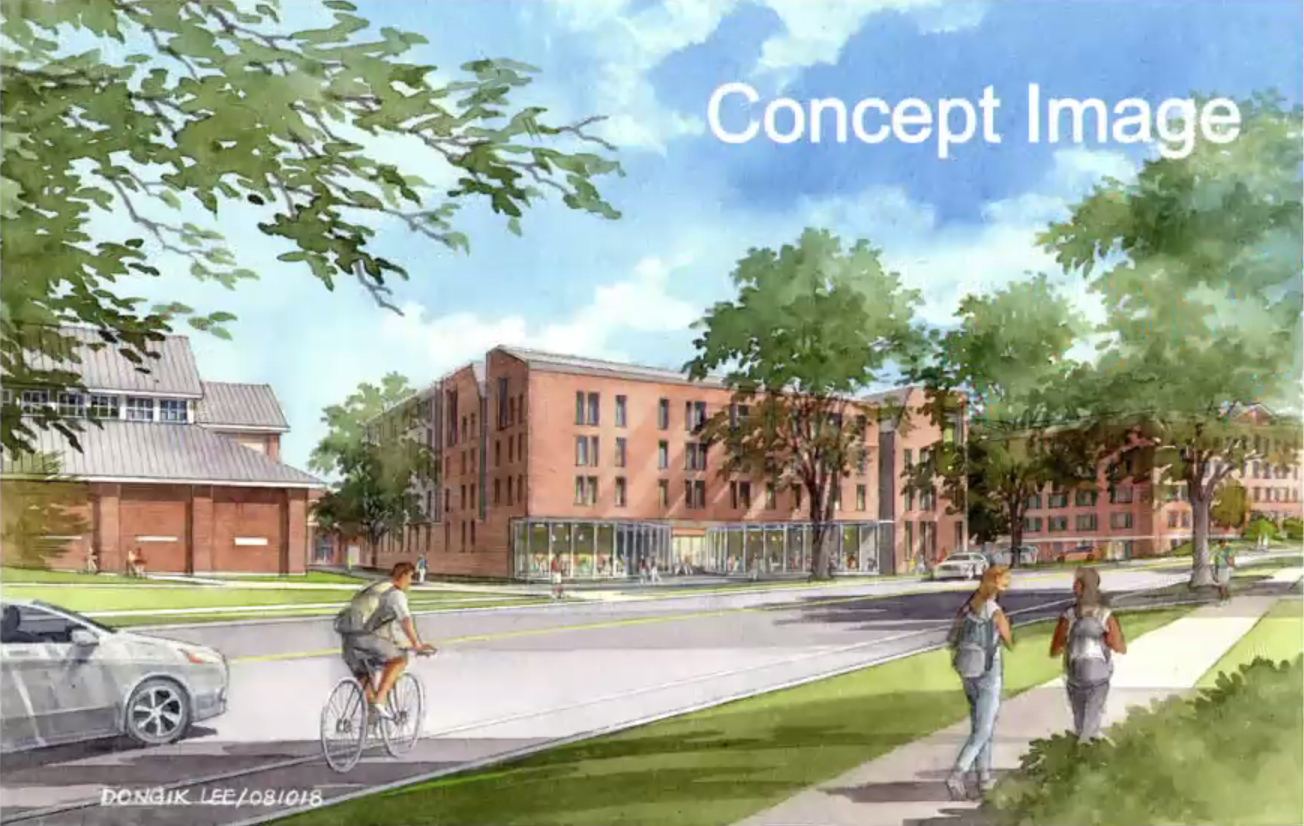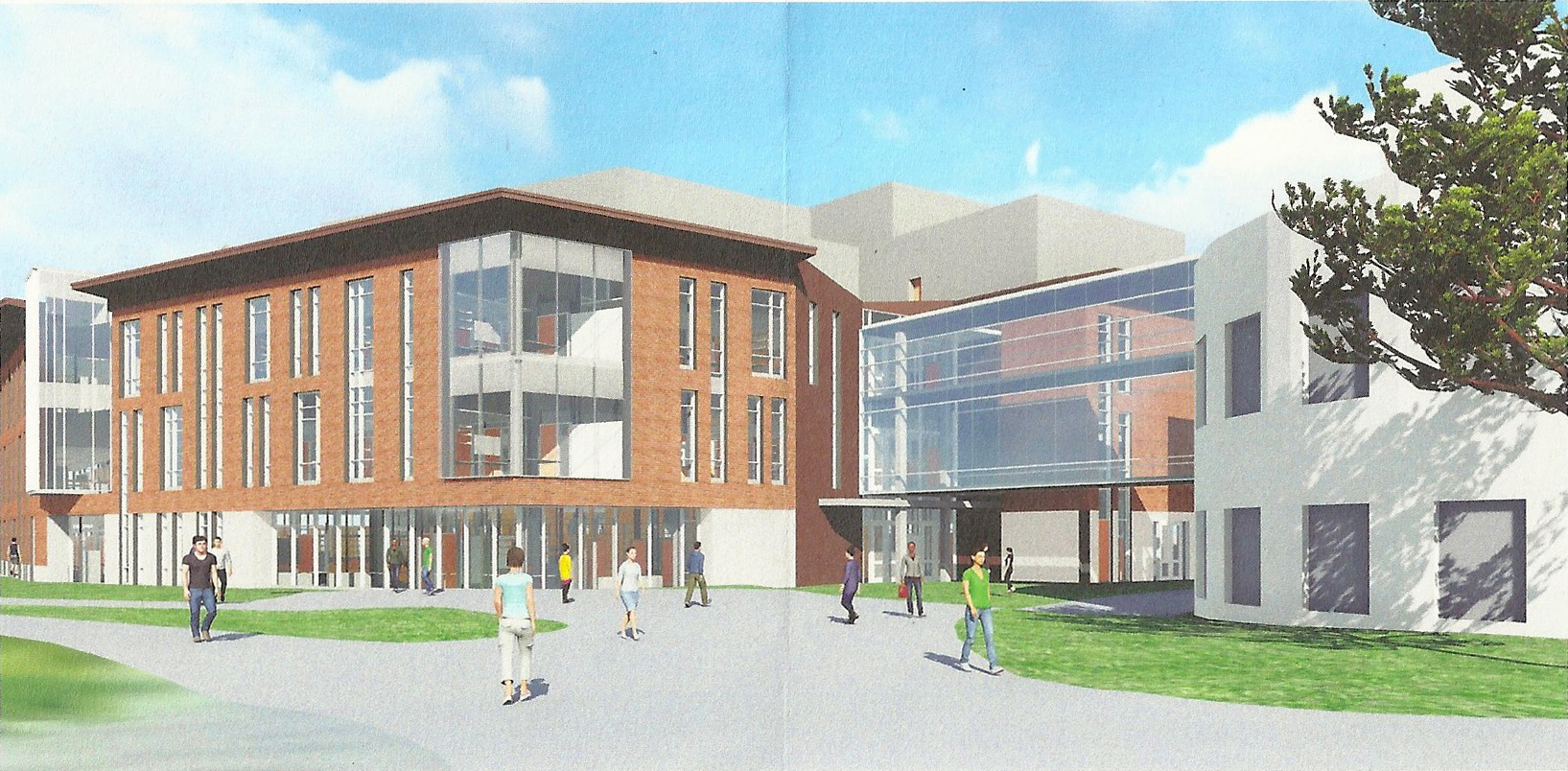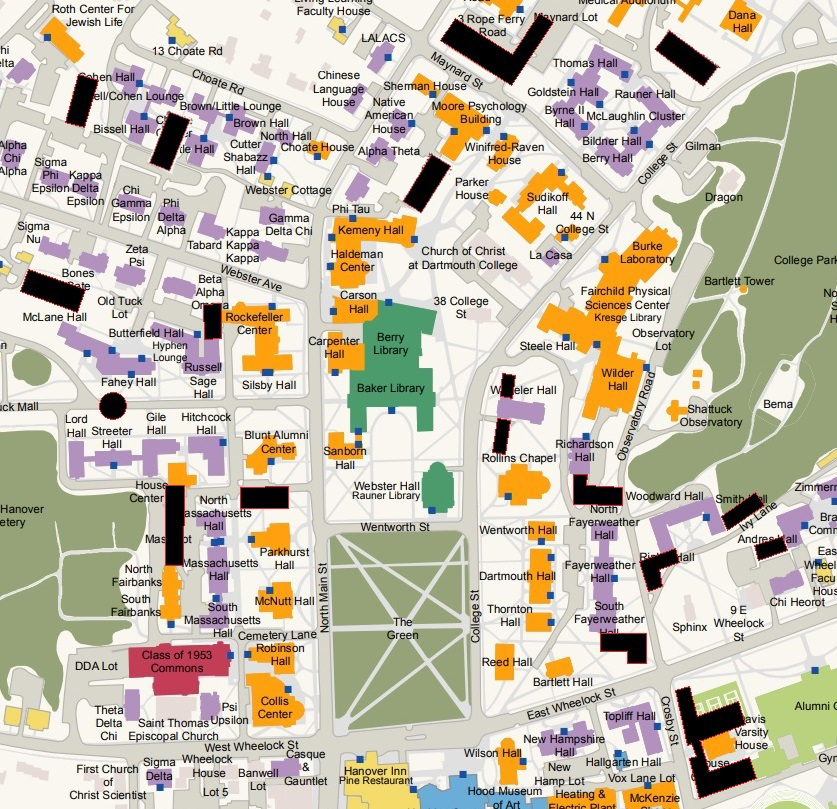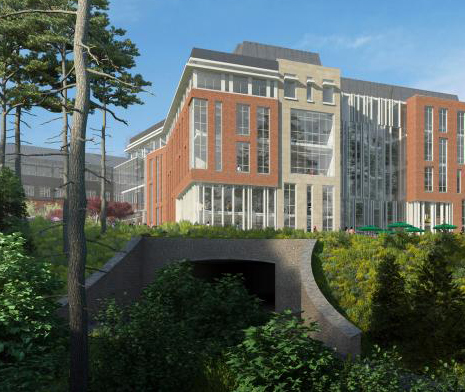The college has been giving presentations (Valley News article) on the potential sites for a proposed 350-bed dorm. An initial list of four sites was reduced to three when College Park was dropped as a site for even this smaller version of the dorm. The three remaining sites are the former site of Gilman, the current site of Dragon on College Street, and the current site of the tennis courts and the Onion on Crosby Street at East Wheelock.
The suggestion on this site that scattering a few smaller additions around campus would be preferable to erecting a single 350-bed dormitory was based on the assumption that such a large building could not comfortably be shoehorned into a site as small as that on Crosby Street. Considering the fact that the entire McLaughlin cluster only contains 341 beds and has a footprint that is much too large to fit next to Alumni Gym, this assumption does not seem unreasonable.
The reason the college gives for the 350-bed number is the desire to use this swing space dorm to house an entire “house community” at a time. Fair enough — that is what Princeton did when it built Scully and Bloomberg Halls, initially planning the buildings to house a rotating cast of residents of other residential colleges as their own buildings were being renovated.
Adhering to the 350-bed goal will require all of the proposed buildings at Dartmouth to stand four and five stories high, and the Crosby Street site will require a building that stands five-and-a-half stories high.
At any rate, Sasaki (presumably) created a site plan and a massing study for each site and had Boston-area designer Dongik Lee draw up two perspective views of each potential building. These are nicely done and show the same style of building in each location. They are introduced with the caveat that they are not actual building proposals but are for illustration only.
Gilman and to a lesser extent College Street make sense as sites for some future building, but they do seem the lesser of the three sites for a new dormitory. College Street in particular begs to be left as forest or to become a site for an addition to Burke, part of a unified science complex 120 years in the making. (And constructing a building on College Street would bump off the Dragon Hall for at least the third time).
The Crosby Street proposal, called “the Question Mark” because of its shape, seems the most popular among audience members. It is nearer to dining areas and has a site that is not more suitable for some other use.
The site has indeed long been reserved for residential use — the 1998 master plan (pdf p. 19) states that “[a]t five stories, two residences on this site could accommodate 200 beds. Social and study spaces could be added to serve Topliff and New Hampshire [H]alls, too.” Interestingly, the 2001 plan and its 2002 update (pdf p. 12) would allow only 160 beds here.
 Concept image of Crosby Street dorm from EVP Rick Mills presentation 16 August 2018
Concept image of Crosby Street dorm from EVP Rick Mills presentation 16 August 2018
A dormitory on Crosby Street could make nice companion to Topliff, which was the giant dorm of its own era. One hopes, however, that the building could be given a footprint that is large enough — and that extends far enough to the south — to reduce its height somewhat. The driveway to Alumni Gym could be realigned to the south, and Davis Varsity House could be moved to face Lebanon Street as part of Larson Square, giving the new dorm more space in which to spread out. And this is completely unrealistic, at least until a Southern Bypass is built, but wouldn’t it be nice if Crosby Street could be partially or completely closed to traffic? That would be one way to make more space.



